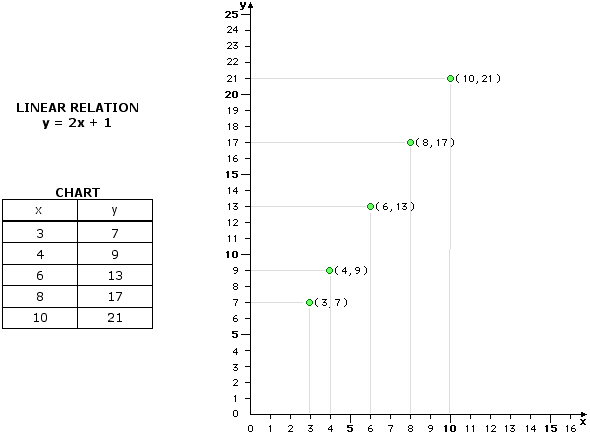Interpolation is a method of predicting/estimating new data value(s) within a discrete set of known data values. Interpolation can be similar to the method of extrapolation, which predicts new data values beyond known data values.
NOTE: data values that are the result of extrapolation from statistical data are often less valid then those that are the result of interpolation.
Given: The sequence of values (representing a pattern of numbers) below.
3, 5, 7, __, 11, 13, 15, 17, 19, ... .
If we needed to know the missing value in the sequence, we would need to interpolate, since we are looking for a value within the known data values.
It appears that two is added to any member of the sequence to get the next member of the sequence. If two is added to seven, a result of nine occurs. Nine is a value interpolated from known values of the sequence of numbers.
Given: A linear relation with a corresponding chart of values and the corresponding graph below.
We would have to interpolate to find y-values that correspond to x-values betwen 3 and 10.
Given an x-value of 7, the corresponding y-value could be extrapolated as 15.
y = 2(7) + 1
y = 14 + 1
y = 15
